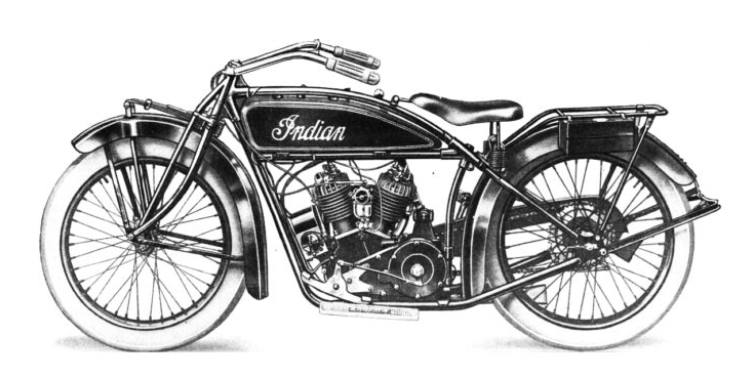|
Chesapeake Chapter - AMCA Dedicates the 2020 national meet to the Indian Scout. The Indian Motorcycle Company introduced the Scout Model in Fall 1919 and had versions through 1949. Though the true Scout of the 1920s never really emerged after WW II. The Scout had a number of changes during its time including the 101 Scout between 1928 and 1931; a standard and heavier frame Scout replaced the 101 in 1932 as Indian used the same frame for all its models during this period; a smaller displacement and a Sport model Scout were introduced in 1934 and these were adapted and used beginning in 1942 for the war effort.
|
INDIAN SCOUT AND SCOUT 101 SPECIFICATIONS
Engines/Carburetor 1919 and throughout production the original engine was an 18hp 37 cu. in./606 cc 42° V-twin F-head inlet over exhaust side valve. In 1927 a larger 22hp 740 cc/45 cu. in. engine was offered and sales of the original smaller engine all but vanished. The Scout used Schebler Carburetor
|
Electrical System6 volt, Ignition by magneto.
Transmission: Three speed manual with multi-disc wet clutch. Frame and Suspension: Double-cradle tubular steel frame with girder forks using a leaf spring at the front and rigid frame at the rear. The Scout 101 used an increased front fork rake angle and provided an increased wheelbase. |
Wheelbase/weight/seat heightWheelbase: 57⅛ in. (1,450 mm) for the Scout 101 Wheels and Tires: 18″ wire. For 1928 clincher rims were used. From 1929-1931 drop center rims. Tires 3.85×18″ front and rear. Weight: Curb weight 370 lb. Dry weight approximately 295 lb. Seat Height: 26 in. (Scout 101)
|
